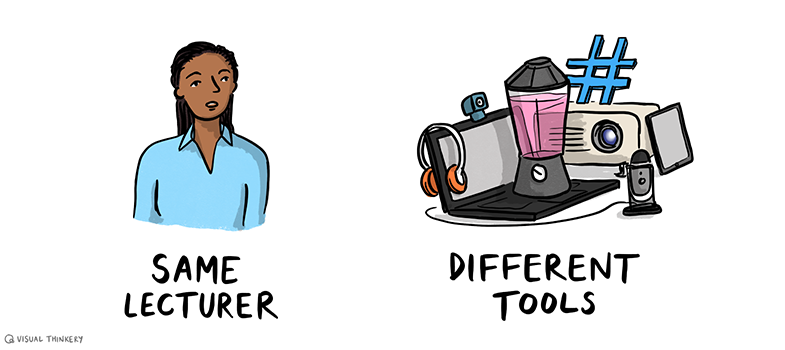1.2 Reflections
Every session of this course presents video clips made at home by educators who have moved their teaching online. These provide authentic examples related to each session’s material. At the same time these clips highlight how simple videos can be produced and used for online education purposes.
The following video was made by an educator called Sarah, who works in the UK. Her experiences reflect some of the concepts that are introduced in this session and will be discussed again later in the course.
Activity 2.1 Different approaches
As you watch the video, or read the transcript, consider which of the approaches Sarah mentions are synchronous and which are asynchronous.
- Make a list of the main tools available at your university that can be used to teach synchronously.
- Make a list of the main tools available at your university that can be used to teach asynchronously.
You may find it helpful to ask your colleagues about tools they use, to see if you can extend these lists.
Transcript
Comment
This activity prompts you to consider the variety of teaching tools that are available at your university. Some of these will be supplied by the university, but others are freely available online. Some of these tools will be introduced during the course, so you may want to return to these lists whenever you find out about a tool that you would like to add to your repertoire.
1.1 Collaboration






